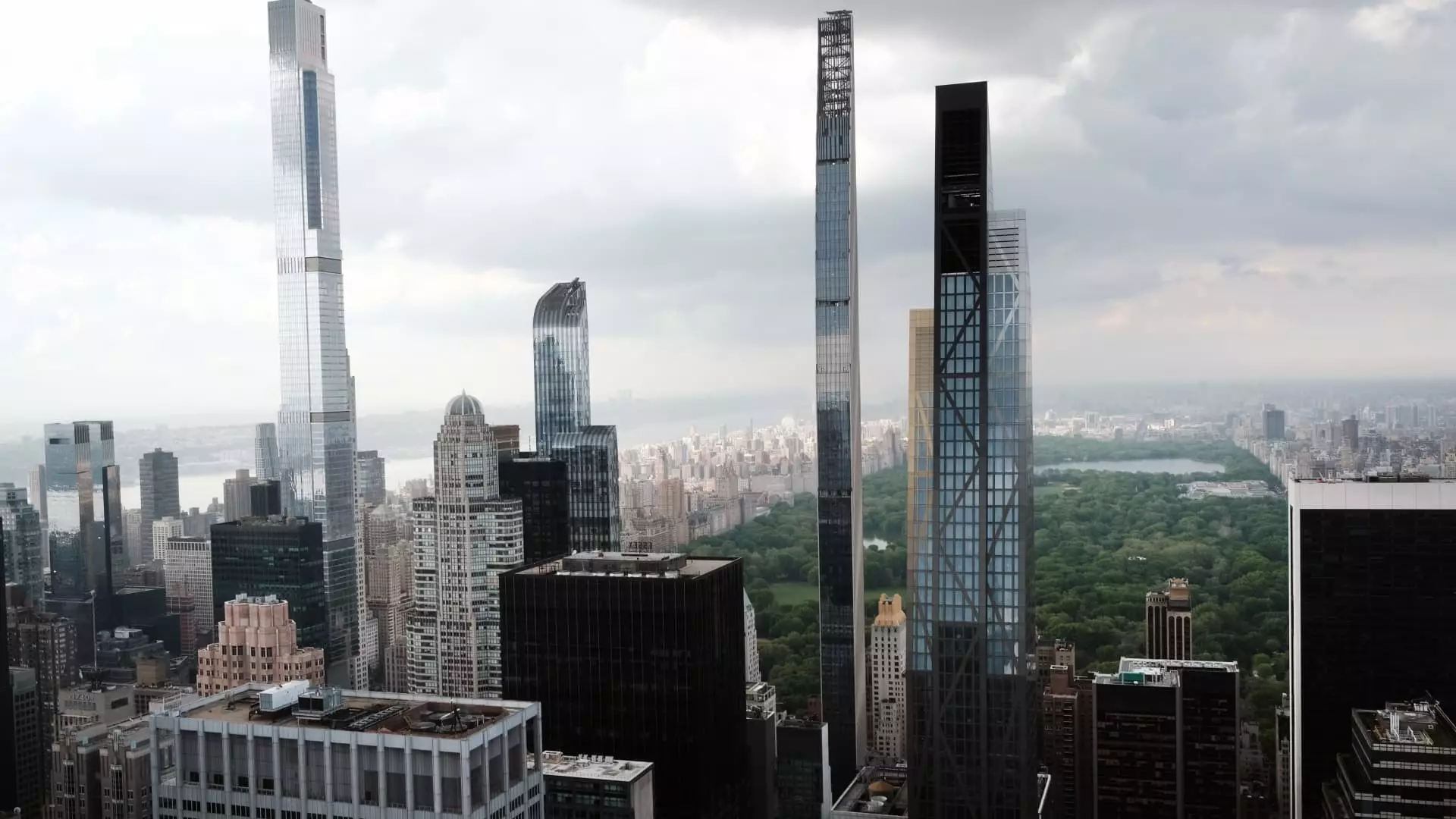The Manhattan real estate market is experiencing an astounding renaissance, boasting a 29% increase in apartment sales in the first quarter of the year compared to the previous cycle. This spike, reflective of an impressive total of 2,560 closed transactions, can largely be attributed to affluent buyers who are seeking stability amidst the turmoil of fluctuating stock markets. The staggering $5.7 billion in sales—a 56% leap—reveals a pronounced shift in investment behavior where the wealthy are favoring tangible assets like real estate over volatile equities.
This dynamic highlights the growing confidence among high-end buyers, driven by their keen desire for portfolio diversification. The luxury market, particularly apartments priced above $5 million, recorded a 49% rise in sales. However, it is the ultra-high-end properties, exceeding $20 million, that are signaling a significant shift in wealth patterns. The high volume of all-cash transactions illustrates the resilience of this sector, with 58% of all sales being cash deals. Consequently, this not only underscores how impervious wealthy buyers are to relentless mortgage interest rates but also raises questions about the sustainability of such transactions in the long run.
The Divergence of Market Segments
Interestingly, while the luxury sector thrives, the mid-market segment—properties priced between $1 million and $3 million—has contracted, with signed contracts falling by 10%. This points to an unsettling trend where middle-class buyers may be increasingly squeezed out of the Manhattan market, a consequence of soaring prices and rising living costs. In contrast, the entry-level market (properties priced from $500,000 to $1 million) is faring relatively better, suggesting a demand for more affordable living options within the densely populated urban landscape.
This divergence raises the alarm for policymakers and urban planners alike regarding the future inclusiveness of Manhattan’s housing market. As wealth consolidates among the elite, it creates a risk of socioeconomic stratification that could lead to shrinking opportunities for a large swath of the population. This development should serve as a wake-up call for those concerned about maintaining the city’s vibrancy and diversity.
Macro and Micro Forces Driving Sales
The upswing in Manhattan’s residential real estate market showcases a complex interplay of macroeconomic and localized factors. Although New York City’s financial bailiwick is typically intertwined with stock market performance, the recent decoupling suggests a strong appetite for hard assets in uncertain financial climates. Additionally, the return of major institutions mandating employees to return to their offices paints an optimistic picture for future demand. The previously dubbed “boomerang wealthy,” affluent individuals relocating back to the city after pandemic-induced migrations, also plays a critical role in revitalizing the market.
However powerful these trends may be, they create an oversimplified narrative. Manhattan’s enduring appeal transcends mere geography. It’s an ethos rooted in history, culture, and opportunity. This complicated relationship renders the city both the pinnacle of luxury living and a battleground for balancing rising wealth with those who contribute to the vibrancy that embodies New York.
The Great Wealth Transfer and Legacy Assets
The “great wealth transfer,” attributed to the migration of financial power from baby boomers to successive generations, is an additional factor propelling the current sales trend. As billion-dollar trusts enter the market, younger buyers—often augmented by family offices—are driving demand for high-end properties. Real estate agents and brokers observe a notable uptick in transactions from these family offices, typically seeking to acquire long-term legacy assets.
Such activity raises essential questions about societal equity and the widening wealth gap. As these affluent buyers enter the market, are their ambitions enriching the city, or simply further entrenching a status quo that could push working-class residents to the margins? The stakes of this real estate boom shouldn’t be taken lightly; it embodies broader economic trends that reverberate across the nation’s landscape.
Looking Ahead: Market Signals and Predictions
Despite the promise that the first quarter of the year holds for future sales, it is vital to approach these figures with caution. Historical context reminds us that the transactions sealed in the early part of the year may not capture the immediate market uncertainties surrounding economic fluctuations. Promising signs, such as the tripling of signed contracts for luxury apartments exceeding $10 million, suggest continued interest from buyers; however, they also lend a sense of urgency to address the long-standing socioeconomic challenges facing the broader population.
In navigating these complexities, it becomes evident that the Manhattan housing market is not just thriving—it’s evolving. As we march toward the future, stakeholders must embrace a more nuanced understanding of the market to inspire policies that will foster inclusivity and adaptability while capitalizing on its undeniable allure.

